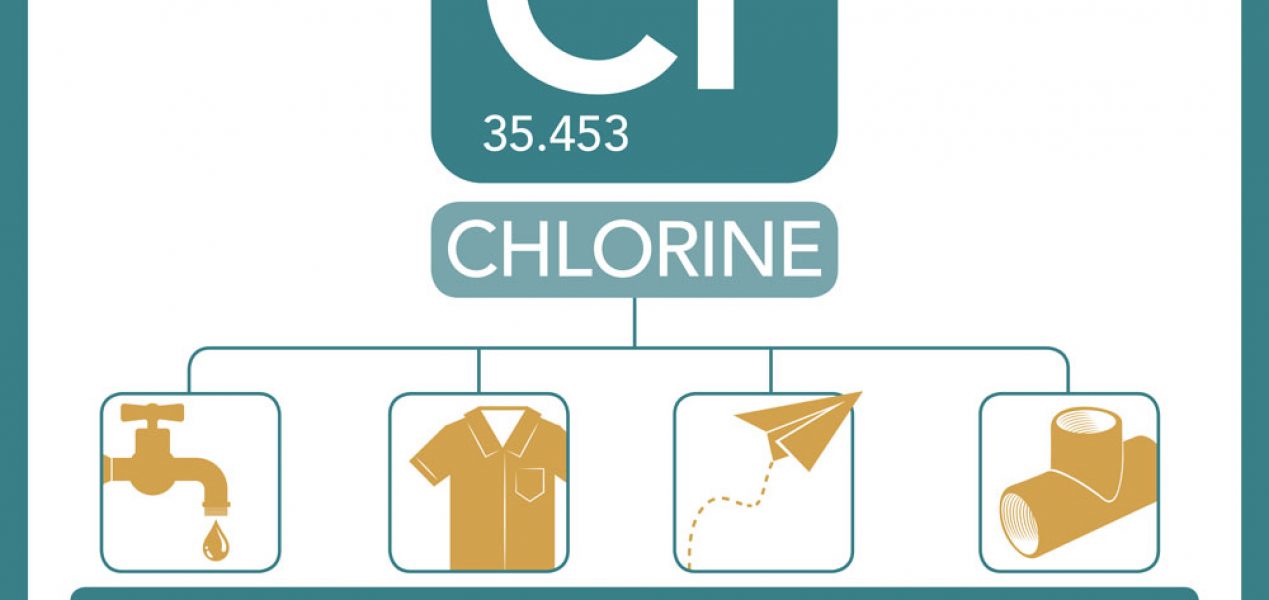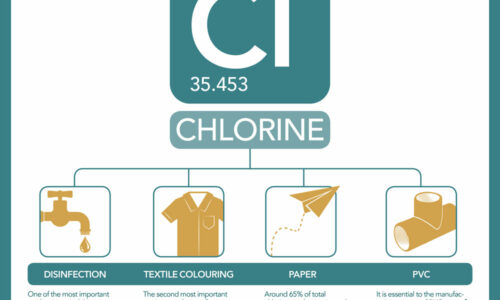The fifth element we’re highlighting in this series of articles in celebration of the International Year of the Periodic Table owes its name to the Greek word chloro, which means yellow-green. It was discovered in 1774 by Carl Wilhelm Scheele, however, it wasn’t until 1810 that Humphry Davy demonstrated that it was a chemical element. Davy was responsible for christening it in reference to its unique colour.
The discovery of this element, represented by the symbol Cl, turned out to be highly significant for humanity. According to LIFE magazine, its use in water purification is considered “probably the most significant public health advancement of the (past) millennium” in addition to the filtration of drinking water. “For many years, untreated water has been the main causing factor of infections, epidemics, and other deaths, and the disinfectant properties of chlorine have helped improve the lives of millions of people around the world”, states Elisabeth Álvarez, Product Manager for Grupo Barcelonesa.
“Beyond its disinfectant properties, chlorine is an essential chemical element used in the manufacture of a large number of products, ranging from paper to textiles, plastics, solar panels, antiseptic medications, solvents or paints, disinfectant and oxidising agents, coagulants…”, explains Álvarez. “It has multiple and highly varied applications”, the Grupo Barcelonesa Product Manager adds.”Chlorine’s tendency to combine with other elements and compounds allows it to be used to produce thousands of essential products”, Elisabeth Álvarez points out. If it weren’t to exist, different alternatives would have to be sought out to replace it in each of its many uses, and we would be hard-pressed to find another element capable of meeting the needs of all these applications.
“Chlorine’s tendency to combine with other elements and compounds allows it to be used to produce thousands of essential products”, Elisabeth Álvarez points out. If it weren’t to exist, different alternatives would have to be sought out to replace it in each of its many uses, and we would be hard-pressed to find another element capable of meeting the needs of all these applications.
For that very reason it can be found making up part of various chlorides, particularly in the form of sodium chloride (Salt). Via electrolysis, these chlorides produce other compounds such as hydrochloric acid or sodium hypochlorite.
The chemical industry generates more than ten thousand chlorine products using a small amount of chlorine-based chemicals. Some chlorine-containing products include glue, paint, solvents, foam rubber, and bumpers. It is also used in the food industry, as it is highly effective against the E. coli bacteria, and in pesticides and anti-freeze agents. One of the most common uses of chlorine-based substances is PVC (polyvinyl chloride), one of the most commonly-found plastics. Some 35% of manufactured chlorine is used to this end. It is also used in de-calcification equipment or in air treatment facilities.
Barcelonesa offers a wide range of items derived from chlorine. Some notable products from our wide water treatment catalogue include the DEPURFER, DEPURAL and PH MINUS ranges. Among our disinfectant and oxidising products, the most used is BD HIPOWAT. In de-calcification, Barcelonesa offers its expansive DEPURSAL range.


